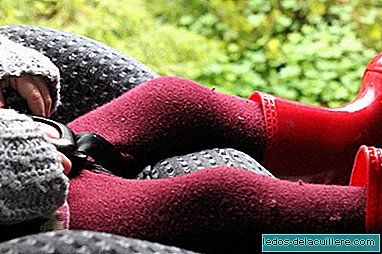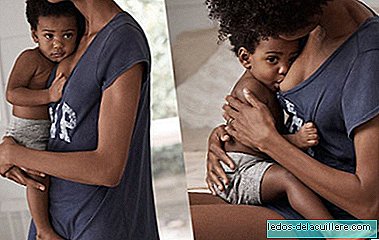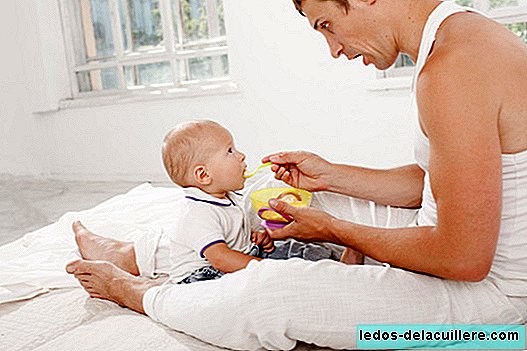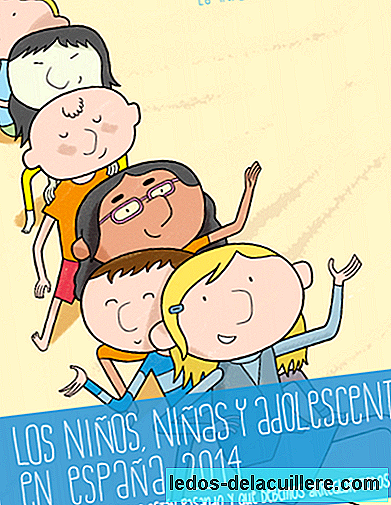
At present there is already more social awareness about the need to reduce the accident rate that car accidents can cause in children, and we all (or almost) have clearer that the best prevention is to use restraint systems appropriate to the weight of the children.
But what happens to children who have special needs? What would happen if they could not use conventional chairs or elevators due to particular physical or psychological conditions?
In the attempt to answer these questions, the Mapfre Foundation has a very complete descriptive report, which has references to experiences in other countries, and some advice. It is called 'children with special needs and their safety in the car'. From it we will extract some points of interest throughout two deliveries. Some kids they have particular needs related to certain conditions, temporary or permanent, of a medical, emotional or learning nature. When traveling as motor vehicle occupants, all children must be protected with restraint systems appropriate to their size and level of development. In addition, some children with certain medical conditions need more care when selecting the most appropriate retention system.
In Spain around 400,000 children are born every year, and the child population between 0 and 14 reaches almost 7,000,000. It has been estimated that there are a minimum of 60,000 children with special needs in Spain from the point of view of their car transport, although the actual figure is probably much higher
 Population rate children with special needs. Table 1
Population rate children with special needs. Table 1 Population rate children with special needs. Table 2
Population rate children with special needs. Table 2Evidently the fact of having very specific needs that prevent using the same devices as other children, is a matter that should motivate to propose solutions. So while in countries like the US, Canada or Sweden there are published and easily accessible guides on car safety for children with special needs, in Spain, and to date, there is nothing comparable. In fact many parents turn to craft solutions.
And although the approved seats to which we have access to any of us in childcare stores or large areas, are valid for some of these children, others that with special or adapted are usually more difficult to acquire and, are noticeably more expensive, with prices that can exceed 1,000 euros.
Child safety seats substantially reduce the risk of injury in case of traffic accidents and all children, regardless of their physical or psychological condition, are entitled to the highest level of safety when traveling by car
What do we think about when we talk about children with special needs?
Some children have particular needs, and there are children who require greater care when selecting the most appropriate retention system.
Special needs can be of many types
Temporary, or short-term physics (premature children or surgical interventions, for example)
Permanent, or chronic, physical (lack of muscle tone, osteogenesis imperfecta)
Psychic or emotional
Related to development problems (or, in certain cases, learning)
Conditions related to behavior or conduct ...
Some special needs are of moderate importance or temporary, while others may be much more serious or permanent. Each child with special needs and his family can be, in short, unique or "special"
Recommendations of the American Academy of Pediatrics
This agency is the main prescriber and source of advice on children's health in the United States. According to the AAP, Children with special needs should have access to the resources necessary for safe transportation; In addition, families and caregivers of these children should have basic information and advice on how to select a car seat, how to install it in family vehicles and school transport, and how to properly seat children in their seats.
Parents should be sufficiently informed about the resources available to travel safely with children with special needs, so that they do not need to go to insecure products or craft solutions. Because a child seat should never be modified by hand so that it can be used by a child with special needs; Similarly, a seat that has been modified for use by children with special needs should never be used, except if the seat has been approved and has passed the corresponding laboratory crash tests.
General advice
(We offer only a selection of them, since they are fully developed in the full Mapfre Foundation report)Depending on the child's medical condition, it may be advisable limit unnecessary travel.
Child seats that look back should never be placed in front of a front airbag, unless it has been deactivated. The front airbag can also be very dangerous when using forward-facing child seats.
The back seat is the safest for any child: whenever possible, children should travel in the rear seats of the vehicle.
If a child with special medical conditions requires continuous observation, or very frequently, during trips, then an adult should accompany him in the back seats. If the child needs to be continuously observed and cannot be accompanied in the back seat by another adult who supervises him, then the option of requesting a switch to install a switch and disconnection of the airbag in the front passenger seat could be considered, in case of that the vehicle does not have the same.
When a child in need of special medical care leaves the hospital, the discharge medical protocol should include information and training on the use of the most appropriate retention system in each case. If necessary, the protocol should include the delivery to parents or caregivers of an adequate child restraint system.
All children with special needs they must have a care plan that includes the necessary precautions during travel or travel. The plan should include a protocol for action in the event of an emergency during the trip. Parents should always carry a copy of that plan, if possible, together with the child restraint system.
If the operation of installing or removing the child from his restraint system is very laborious, it may be worth requesting a disabled parking permit. The parking spaces for the disabled tend to be more spacious, allowing greater comfort when moving around the vehicle.
You should never leave a child alone inside the vehicle, even when you are going to make a management that lasts just a few seconds. Your child's safety requires that the child be removed from his seat and reinstalled each time adults leave the vehicle.
I have to emphasize that these recommendations are the result of a medical and social attitude typical of a country where there are specific guidelines for these children with special needs. In Spain there are none, however this does not mean that health professionals are not informed about it, therefore the need for proper communication with them should not be neglected.
The purpose of this document is help families with children with special needs, who face daily a very high number of challenges of great importance, have at least in the field of the safety of their children in the car with tips and technical solutions for help.
This work has been possible thanks to the special sensitivity for child road safety and, more particularly, for children with special needs, the MAPFRE Foundation and its Road Safety Institute.
On our part We continue within three days with a summary of the review of experiences in other countries and how certain particular conditions preclude the use of chairs and elevators that are in the market.
Images | various brennemans on Flickr, Mapfre Foundation Source | Fundación Mapfre Full report | Children with special needs and their safety in the car In Peques y Más | Children must travel in their safety seats at least until they measure 1.35 centimeters. Four out of ten children who lost their lives in a traffic accident did not use protection systems. A study of the MAPFRE FOUNDATION reveals that many disabled children do not travel correctly












